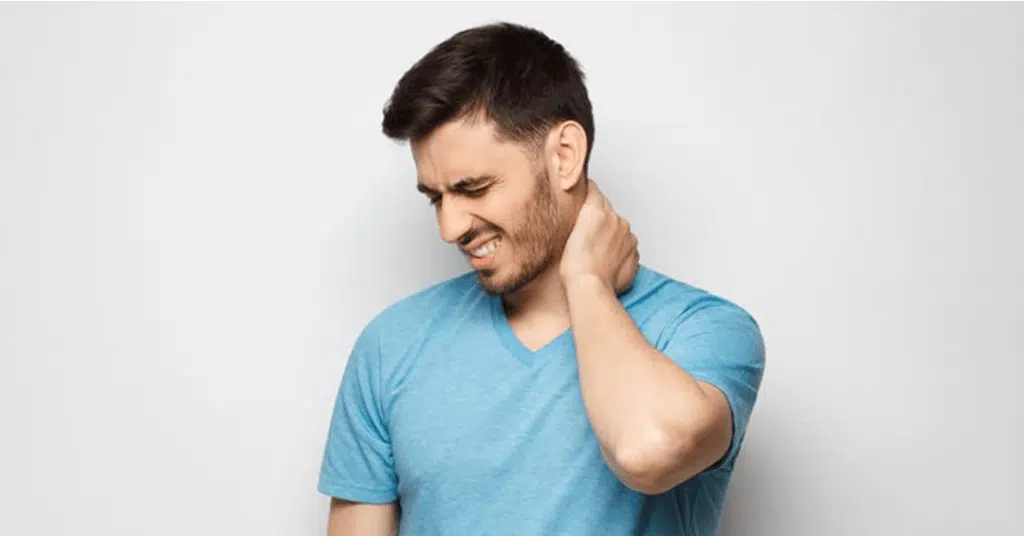
Neck pain can arise from many sources. For example, there are ligaments that hold bones to other bones that are non-elastic and very strong. There are muscles and tendons that tear as well and can be referred to as a strain. Injuring the ligament during activity is referred to as a sprain.
The disks lay between the vertebrae in the front of the spine. They are part of the primary support and shock absorbing system of our neck and back. There are 6 disks in the neck, 12 in the mid-back, and 5 in the low back for a total of 23. The disks in the lower back are big, like the vertebral bodies. They sit between and get progressively smaller as they go up the neck towards your head. When we bend our necks forward, the disk compresses and opens wider when we lookup.
I slipped a disk in my neck!
The terms slipped disk, herniated disk, ruptured disk, and bulging disk all mean something similar. A central part of the disk is liquid-like and can herniate in any direction. When it does, it can create pain if it pinches something. Since the invention of the CAT scan and MRI, many people have been found to have some type of disk alteration. 50%+ shows bulging disk(s) and 21% show herniations WITH NO PAIN AT ALL! So why order an MRI? It may show bulges or herniations that are not “clinically” important leading a doctor to recommend surgery when it’s not needed.
Cervical Neck Herniation
There are “KEY” findings in the history and examination that lead to the diagnosis of a cervical disk injury. From the history, the disk patient often has arm pain, numbness, and/or muscle weakness that follows a specific pathway. This includes numbness to the thumb/index finger (C6 nerve), middle of the hand & 3rd finger (C7), or the pinky & ring finger (C8). Certain positions, such as looking up, usually irritate the neck and arm, while bending the head forward offers relief. The patient also finds relief by putting the arm up and over their head. Other examination findings unique to a cervical disk injury include reproducing the arm pain by placing the head in certain positions such as bending the head back and to the side simultaneously. Another is compressing the head into the shoulders. When lifting up on the head (traction), relief of arm pain is common. The neurological exam will usually show a reduction of sensation when we gently poke them with a sharp object, and/or they may have a weakness when compared with the opposite side.
Conclusion
Chiropractic treatments can be very successful in resolving cervical disk herniation signs and symptoms within the neck. Before agreeing to a surgical correction, seek chiropractic treatment in North Dallas. Often, the surgeon will recommend a fusion of two or more neck vertebrae, sometimes with a metal plate in the front of the spine. This increases the load on either side of the fusion and can create problems above and below the fusion. Trust us, try chiropractic first. You’ll be glad you did!

